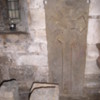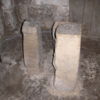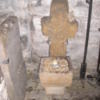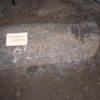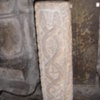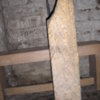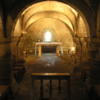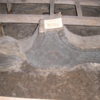St Mary's Lastingham, North Yorkshire
Title
St Mary's Lastingham, North Yorkshire
Subject
Architecture
Description
Lastingham was founded by Bishop Cedd in AD 654. St Cedd was born in Northumbria, and was trained at Lindisfarne under St Aidan along with his brothers Cynebil, Caelin and Chad. During his lifetime Cedd was sent to evangelise the Middle Angles and the East Saxons, and in 653 Bishop Finan of Lindisfarne elevated Cedd to Bishop of the East Saxons (Bede, Historia Ecclesiastica, iii.22). Cedd frequently visited his native Northumbria while Bishop of the East Saxons, and Bede informs us that King Ethelwald of Deira (c. 651-5), son of Oswald (c. 604- 642), granted Cedd land to build a monastery, and Bede states (iii.23): 'So, in accordance with the king's desire, Cedd chose himself a site for the monastery amid some steep and remote hills which seemed better fitted for the haunts of robbers and the dens of wild beasts than for human habitation.' Cedd was buried at his monastery at Lastingham and was succeeded by his brother Chad, bishop of Lichfield.
Bede (iii.23) informs us that St Cedd was originally buried outside his church at Lastingham, but that later a stone church was built and Cedd's body was reburied to the right of the altar. Apart from early stone crosses and other architectural fragments (and possibly the altar of the crypt), none of the Anglo-Saxon church now remains. The Norman church now present was built in 1078 above the site of the earlier Anglo-Saxon church. Stephen built the crypt in the eleventh century as a shrine to St Cedd, and it is believed that the crypt was built over the place where Cedd was buried and also above the site of the original Anglo-Saxon church (judging by the size of the crypt and the layout, this is very conceivable). The crypt is the only one in England to have an apse, and the columns in the crypt appear to be pre-Norman, suggesting that building material from the earlier church were used for rebuilding in the eleventh century. The Anglo-Saxon and Viking sculptured stones are now housed in the crypt at Lastingham.
Bede (iii.23) informs us that St Cedd was originally buried outside his church at Lastingham, but that later a stone church was built and Cedd's body was reburied to the right of the altar. Apart from early stone crosses and other architectural fragments (and possibly the altar of the crypt), none of the Anglo-Saxon church now remains. The Norman church now present was built in 1078 above the site of the earlier Anglo-Saxon church. Stephen built the crypt in the eleventh century as a shrine to St Cedd, and it is believed that the crypt was built over the place where Cedd was buried and also above the site of the original Anglo-Saxon church (judging by the size of the crypt and the layout, this is very conceivable). The crypt is the only one in England to have an apse, and the columns in the crypt appear to be pre-Norman, suggesting that building material from the earlier church were used for rebuilding in the eleventh century. The Anglo-Saxon and Viking sculptured stones are now housed in the crypt at Lastingham.
Creator
Kelly A. Kilpatrick
Date
Anglo-Saxon (seventh-century in origin), Norman, Medieval, Modern
Language
English
Date Created
2010-09-16
Files
Citation
Kelly A. Kilpatrick, “St Mary's Lastingham, North Yorkshire,” Woruldhord, accessed April 24, 2024, http://poppy.nsms.ox.ac.uk/woruldhord/items/show/356.

